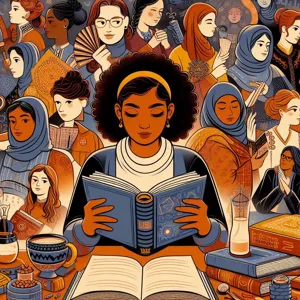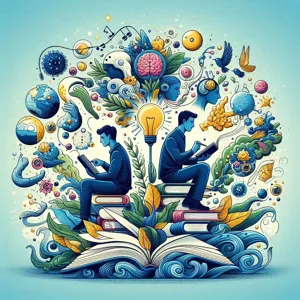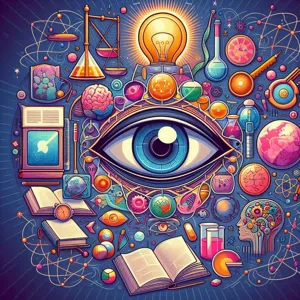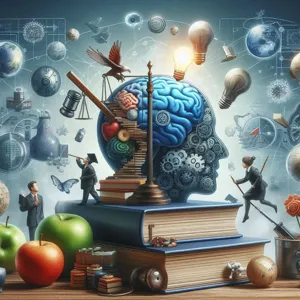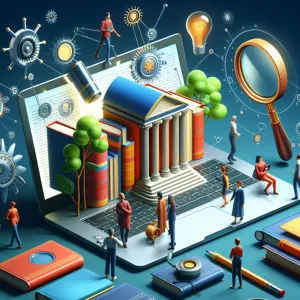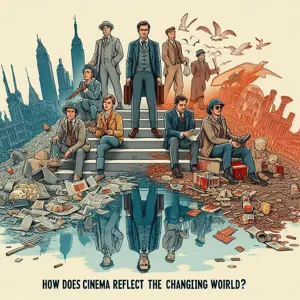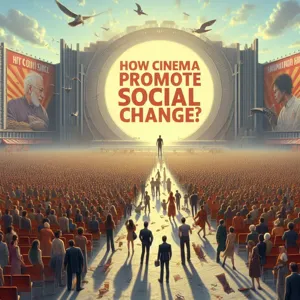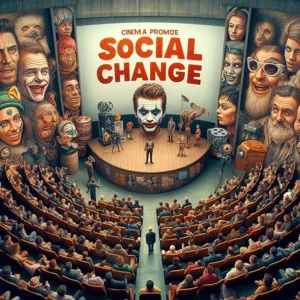For golf enthusiasts, nothing quite compares to the thrill of hitting the greens, feeling the sun on your back, and sharing laughs with fellow players.
Whether you’re a seasoned pro or just starting to develop your swing, joining a golf league can be a transformative experience, offering camaraderie, competition, and the chance to elevate your game. However, with so many options available, finding the perfect golf league can feel overwhelming. In this ultimate guide, we’ll navigate the fairways of league selection, exploring key factors such as skill level, format, and location to help you discover a league that aligns with your interests and aspirations. Get ready to tee off on a journey that not only enhances your golfing skills but also fosters lasting friendships and unforgettable memories on the course!
1. Understanding the Benefits of Joining a Golf League

Joining a golf league can transform your golfing experience, taking it from a solitary pastime to a vibrant social adventure. One of the primary benefits of participating in a golf league is the structured play it offers. League formats typically include regular schedules, which not only encourage consistent practice but also help you improve your skills over time. This routine fosters a sense of accountability, ensuring you hit the course on a regular basis, and ultimately, become a better golfer.
Additionally, golf leagues provide an excellent opportunity for networking. Whether you’re looking to build professional connections, make new friends, or simply enjoy the camaraderie of fellow golf enthusiasts, a league offers a supportive community. The shared experience of competition—whether friendly or serious—creates bonds that can last long after the final putt drops. You’ll find yourself sharing tips, celebrating victories, and bonding over the occasional mishap on the course.
Moreover, being part of a golf league can enhance your enjoyment of the game. Many leagues organize fun events, tournaments, and social gatherings that go beyond just playing golf. These activities can include themed nights, charity events, and seasonal parties, making your time on the course about more than just the sport itself. It’s an opportunity to engage with the game in a more meaningful way, fostering relationships and memories that enrich your life beyond the fairways.
Lastly, joining a golf league often comes with perks, such as reduced green fees, exclusive access to certain courses, and discounts on equipment and apparel. These benefits can make your golfing experience not only more enjoyable but also more economical. By recognizing the myriad advantages of joining a golf league, you can make an informed decision that enhances both your game and your social life. Whether you are a seasoned golfer or just starting out, becoming a part of a league is a step toward more fulfilling rounds on the course.
2. Types of Golf Leagues: Which One is Right for You?
When it comes to finding the perfect golf league, the first step is understanding the different types available and determining which one aligns with your skill level, interests, and social preferences. Golf leagues can vary widely in format, structure, and atmosphere, making it essential to choose one that enhances your overall experience on the course.
**1. Casual Leagues:** If you’re looking for a relaxed atmosphere where the primary focus is on enjoyment rather than competition, consider a casual league. These leagues typically welcome players of all skill levels and emphasize camaraderie over scoring. Perfect for beginners or those looking to socialize, casual leagues often feature fun themes, lighthearted competitions, and a strong sense of community.
**2. Competitive Leagues:** For those who thrive on competition and are looking to sharpen their skills, competitive leagues are the way to go. These leagues often have established handicaps and may require a certain level of proficiency. Players will engage in weekly matches, tournaments, or even season-long rankings, allowing them to challenge themselves and improve their game while still enjoying the sport.
**3. Mixed Leagues:** Want to play alongside friends or family of different skill levels? Mixed leagues provide an inclusive environment where both men and women can participate together. These leagues often feature unique formats and can be a great way to bond with loved ones while enjoying the game.
**4. Senior Leagues:** Tailored for older golfers, senior leagues focus on providing a comfortable and enjoyable environment for players aged 50 and up. These leagues typically consider the physical demands of the game, often incorporating shorter courses or modified rules to ensure that everyone can participate and enjoy the sport.
**5. Corporate Leagues:** If you’re looking to blend business with pleasure, corporate leagues can be a perfect fit. These leagues often cater to companies seeking to foster teamwork and networking among employees. Events may include outings, tournaments, and social functions, all designed to strengthen professional relationships in a relaxed setting.
**6. Charity Leagues:** For those driven by a cause, charity leagues offer a way to play while giving back to the community. These leagues often organize events where a portion of the proceeds supports various charitable organizations, allowing players to enjoy the game they love while making a positive impact.
With so many options available, take the time to reflect on what you want out of your golf league experience. Whether you’re seeking competition, camaraderie, or a chance to support a good cause, there’s a league out there that’s just right for you. By carefully considering your preferences, you’ll be well on your way to teeing off in a league that not only suits your style but also enhances your overall enjoyment of the game.
3. Assessing Your Skill Level: Finding a League That Fits

When it comes to joining a golf league, understanding your skill level is crucial for an enjoyable and rewarding experience. After all, the right league will not only challenge you but also foster camaraderie among players of similar abilities. To begin this assessment, take a moment to reflect on your own golfing journey. Are you a seasoned player who can confidently navigate the course, or are you a relative newcomer still mastering your swing?
If you’re unsure where you stand, consider participating in a few casual rounds with friends or at your local driving range. You might also seek out informal clinics or lessons to gauge your proficiency. Many leagues categorize players into skill brackets—beginner, intermediate, and advanced—so knowing where you fit will help streamline the selection process.
Once you have a clear understanding of your skill level, research local leagues that align with your abilities. Look for descriptions or reviews that reference the competitiveness of each group. For instance, some leagues may focus more on socializing and fun, while others might have a more competitive edge, with players striving for lower scores and trophies.
Additionally, consider the league’s format. Some leagues may emphasize individual performance, while others may offer team-based play. This can greatly influence your experience, as team dynamics can enhance camaraderie and make the game more enjoyable, especially for those who are newer to the sport.
Ultimately, the key is to find a league where you feel comfortable yet inspired to improve. When you find that perfect fit, you’ll not only enhance your skills but also cultivate lasting friendships that can elevate your love for the game. Remember, golf is as much about the journey as it is about the score—choose a league that celebrates both!
4. How to Research Local Golf Leagues
Finding the right golf league can be a game-changer for your golfing experience, and it all starts with thorough research. To effectively navigate the plethora of local options, begin by leveraging online resources. Websites like the United States Golf Association (USGA) and Golf Digest offer valuable directories that can help you locate leagues in your area. Additionally, social media platforms such as Facebook or Instagram can provide insights into local golfing communities, where you can join groups dedicated to the sport and ask for recommendations from fellow enthusiasts.
Don’t overlook the power of word-of-mouth; reach out to friends, family, or co-workers who share your passion for golf. They might have personal experiences or insights that can guide you towards the right league. Visiting local golf courses is another excellent strategy. Many clubs host leagues and tournaments, and speaking directly with staff or current members can give you a feel for the league’s atmosphere and competitiveness.
Consider attending open houses or introductory sessions offered by some leagues. This hands-on approach not only allows you to meet fellow golfers but also provides an opportunity to assess the league’s culture, pace of play, and overall vibe. Make sure to inquire about the league’s format—whether it’s casual play, competitive tournaments, or a mix of both—so you can align your expectations with what is offered.
Finally, don’t forget to check the league’s schedule, membership fees, and any additional requirements, such as handicaps or dress codes. By doing your homework and exploring your options, you can confidently choose a golf league that not only matches your skill level but also enriches your overall golfing journey.
5. Key Questions to Ask Before Joining a League

Before you commit to a golf league, it’s essential to ask the right questions to ensure it aligns with your interests, skill level, and social preferences. Here are some key inquiries to consider that can help you make an informed decision:
**1. What is the league’s format?**
Understanding the league’s structure is crucial. Are you playing in a scramble, stroke play, or match play format? Each type offers a different experience, and knowing what to expect can help you determine whether it matches your playing style.
**2. What is the skill level of the participants?**
Inquire about the average skill level of league members. If you’re a beginner, joining a league with seasoned players might be intimidating and less enjoyable. Conversely, if you’re more advanced, a league filled with novices might not provide the competitive edge you’re looking for.
**3. How often does the league meet?**
Understanding the schedule is vital for your commitment. Does the league play weekly, bi-weekly, or monthly? Additionally, consider the time of day—are the rounds scheduled for mornings, evenings, or weekends? Ensure that the league’s timing fits your lifestyle.
**4. What are the fees involved?**
Ask about the financial commitment required to join the league. Are there membership fees, greens fees, or additional costs for tournaments and events? Make sure you’re aware of all potential expenses to avoid any surprises down the road.
**5. What is the social atmosphere like?**
Every league has its own culture. Do members tend to socialize after rounds, or is it more focused on competition? If camaraderie and networking are important to you, look for a league that fosters a friendly and welcoming environment.
**6. Are there opportunities for skill development?**
Consider whether the league offers any instructional support or clinics. Many leagues have opportunities for players to improve their game through workshops or coaching sessions. If growth as a golfer is a priority for you, this can be an essential factor in your decision.
By asking these key questions, you can ensure that the league you choose not only enhances your golfing experience but also fits seamlessly into your lifestyle. Finding the right match will lead to lasting friendships on the green and a deeper enjoyment of the game. Happy teeing off!
6. The Importance of League Structure and Format
When it comes to choosing a golf league, understanding its structure and format is crucial to ensuring a fulfilling experience on the green. Different leagues offer unique setups that cater to various skill levels, playing styles, and competitive desires.
First, consider the league’s structure: Is it a casual club with a focus on social interaction and enjoyment, or does it lean more towards competitive play with strict rules and regulations? Casual leagues often prioritize camaraderie and fun, incorporating events like themed outings, family days, or charity tournaments. Conversely, competitive leagues may operate under strict handicapping systems and formal scoring, appealing to those who thrive on challenge and personal improvement.
Next, delve into the format of play. Some leagues adopt a traditional stroke play format, where individual scores are tallied, while others might utilize match play, where golfers compete head-to-head, adding a dynamic layer of strategy and excitement. Additionally, team formats, such as scramble or best-ball, foster collaboration and can level the playing field for golfers of varying abilities.
Don’t overlook the scheduling and frequency of play. Some leagues might meet weekly, while others have monthly tournaments or seasonal events. Make sure the league’s schedule aligns with your availability and lifestyle, as consistent participation is key to forming friendships and enhancing your skills.
Ultimately, understanding the league structure and format will help you find a golfing community that not only matches your skill level but also meets your social and competitive needs. This alignment is essential for creating a rewarding experience that keeps you eager to hit the links week after week.
7. Considering League Costs and Fees

When diving into the world of golf leagues, it’s essential to keep a close eye on the costs and fees associated with participation. While the allure of teeing off with fellow enthusiasts can be enticing, understanding the financial commitments involved will ensure that you make a decision that fits your budget and lifestyle.
Start by researching the various fees that leagues may impose. These can range widely depending on the league’s structure, location, and level of play. Some leagues charge a nominal membership fee that covers administrative costs, while others may require a more substantial payment that includes green fees, equipment rental, and access to exclusive events or tournaments. In addition to these initial fees, consider any additional costs that might crop up throughout the season, such as cart rentals, special events, or fundraising activities.
It’s also wise to assess the value you’re getting for your investment. Some leagues offer perks like professional coaching sessions, organized social outings, and discounted merchandise, which can enhance your overall experience. Conversely, if the league lacks engagement or community-building activities, you may want to think twice about whether the cost is justified.
Lastly, don’t forget to factor in the potential for additional expenses related to travel, especially if the league requires you to participate at different courses or locations. Understanding all these elements will help you make an informed choice and ensure that your foray into the world of golf leagues is not only enjoyable but also financially sound. By keeping a careful eye on costs and weighing them against the benefits, you’ll be well on your way to finding the perfect league that fits both your game and your wallet.
8. How to Connect with Other Golfers in Your Area
Finding a golf league that suits your style and skill level is just the beginning of your golfing journey; connecting with other golfers in your area can enhance your experience even further. Building a network of fellow golf enthusiasts opens up opportunities for camaraderie, learning, and, of course, more rounds on the course. Here are some effective ways to forge those connections:
**Join Local Golf Clubs and Organizations:** Many cities have golf clubs or associations that cater to players of all skill levels. Becoming a member not only gives you access to exclusive leagues and tournaments but also introduces you to a community of golfers who share your passion. Attend club events, participate in mixers, and don’t hesitate to introduce yourself. You might just find your next golf buddy or even a mentor to help improve your game.
**Participate in Open Tournaments and Events:** Keep an eye out for local tournaments, charity events, or golf outings that welcome players from the community. These events are a fantastic way to meet other golfers, engage in friendly competition, and experience different courses. Plus, they often provide a relaxed atmosphere where you can strike up conversations with like-minded individuals.
**Utilize Social Media and Golf Apps:** In today’s digital age, social media platforms and golf-specific apps have become valuable tools for networking. Join local golf groups on Facebook or follow community hashtags on Instagram to stay updated on events, league sign-ups, and casual meet-ups. Apps like Meetup and GolfNow can also help you connect with local golfers who share your interests and availability.
**Visit Local Driving Ranges and Practice Facilities:** Spend some time at nearby driving ranges or practice facilities where golfers often gather. Striking up a conversation while waiting for your turn can lead to new friendships. Many ranges also host clinics and group lessons, providing an excellent opportunity to meet fellow golfers who are looking to improve their skills.
**Attend Golf Expos and Workshops:** Check your local event calendar for golf expos, workshops, or clinics that focus on different aspects of the game. These gatherings not only allow you to learn from professionals but also to connect with other attendees who are equally passionate about golf. Networking at these events can lead to lasting friendships and even playing invitations.
By actively seeking out these opportunities to connect with fellow golfers, you’ll not only enhance your enjoyment of the game but also create a supportive community that can help you grow as a player. Whether it’s sharing tips, organizing friendly rounds, or simply enjoying a post-game drink, the relationships you build on the course can significantly enrich your golfing experience.
9. The Role of Golf Etiquette in League Play
Golf is not just a game of skill; it’s also a social activity steeped in tradition and etiquette. Understanding and practicing proper golf etiquette is crucial in league play, as it not only enhances your experience but also fosters a respectful environment among fellow players. In a league setting, where camaraderie and sportsmanship are paramount, adhering to golf etiquette can significantly impact the overall atmosphere of the game.
First and foremost, being punctual is essential. Arriving on time demonstrates respect for your fellow league members and ensures that everyone can start their round without unnecessary delays. Once on the course, be mindful of pace of play—keep up with the group ahead of you, and be ready to tee off when it’s your turn. This consideration not only enhances everyone’s enjoyment but also helps maintain the rhythm of the game.
Maintaining the course is another vital aspect of golf etiquette. Repairing divots, raking bunkers, and fixing ball marks on the greens are small gestures that go a long way in preserving the quality of the course for all players. Remember, you’re not just playing for yourself; you’re part of a larger community that shares the same space.
Moreover, being respectful of others’ swings is crucial. Silence your phone, refrain from talking, and avoid unnecessary movement while your fellow players are taking their shots. A moment of distraction can have a significant impact on someone’s game, and being considerate can foster a more supportive environment.
Finally, the spirit of sportsmanship should always be at the forefront of league play. Whether you win or lose, it’s essential to congratulate your fellow players and appreciate their efforts. A handshake, a word of encouragement, or a simple nod of acknowledgment can create lasting bonds and a sense of community within your league.
In summary, mastering golf etiquette is not just about following rules—it’s about creating an enjoyable experience for everyone involved. As you navigate your way through the world of golf leagues, remember that how you conduct yourself on the course is just as important as the score you achieve. Embrace the traditions, respect your fellow players, and you’ll not only find success on the course but also forge friendships that can last a lifetime.
10. Tips for Balancing League Play with Personal Goals
Finding the right balance between participating in a golf league and pursuing your personal golfing goals can be a delicate dance. Whether you’re striving to lower your handicap, improve your swing, or simply enjoy the game more, it’s essential to carve out a strategy that allows you to thrive in both areas. Here are some valuable tips to help you harmonize your league play with your personal aspirations.
First, set clear and achievable goals for your individual play. Whether this means practicing specific skills, increasing your distance off the tee, or mastering your short game, having defined targets gives you direction. Write these goals down and refer back to them regularly to stay focused and motivated.
Next, allocate specific practice times around your league schedule. Instead of seeing your league play as a hindrance to personal improvement, view it as an opportunity to test what you’ve practiced in a competitive environment. Use league matches to assess your progress and identify areas for further development.
It’s also important to communicate your intentions with your league mates. Let them know about your personal goals; they can become a support system and may even provide helpful tips or constructive feedback. Plus, having a community that understands your aspirations can enhance your enjoyment of both league play and individual practice.
Lastly, don’t forget to celebrate your personal victories, no matter how small. Each improvement, whether in your league performance or individual practice, deserves recognition. This positive reinforcement will keep you motivated and ensure that both your league involvement and personal growth in golf remain enjoyable and fulfilling. By strategically blending league play with personal ambition, you’ll be well on your way to becoming not just a better golfer, but a more satisfied one too.
11. Getting Involved: Volunteering and Contributing to Your League
Getting involved by volunteering and contributing to your league can transform your golf experience from simply playing the game to becoming an integral part of a vibrant community. When you choose to volunteer, you’re not just giving back; you’re forging connections with fellow golfers who share your passion for the sport. Whether you’re helping organize tournaments, managing player registrations, or assisting with league communications, these roles allow you to immerse yourself in the inner workings of your league while enhancing your golf skills and knowledge.
Volunteering also opens doors to new friendships and networking opportunities. You’ll meet golfers of all skill levels, each with unique stories and insights that can enrich your own game. Plus, being involved in league activities often provides you with exclusive access to special events, training clinics, and even early registration for popular tournaments. This sense of belonging can boost your morale and motivation, making every swing on the course more enjoyable.
Moreover, contributing your time and effort can foster a sense of ownership and pride within your league. When you see the fruits of your labor—whether it’s a well-organized event or a successful charity tournament—you’ll feel a deep satisfaction that comes from making a positive impact. Not to mention, volunteering can also enhance your reputation within the league, potentially leading to leadership roles and greater influence on future league decisions.
So, if you’re looking for a way to deepen your relationship with the game and your fellow golfers, consider stepping up to volunteer. Your contributions can help create a thriving, supportive environment where golfers of all levels can thrive—and who knows, you might just discover a new passion along the way!
12. The Social Aspect: Making Friends Through Golf
When it comes to golf, the game is not just about the swing, the scorecard, or the last putt; it’s also about the camaraderie that unfolds on the course. Joining a golf league offers an incredible opportunity to meet new people and foster lasting friendships, all while enjoying the great outdoors. Whether you’re a seasoned player or a newcomer to the sport, the social aspect of golf can significantly enhance your experience.
Imagine stepping onto the green and being greeted by a diverse group of fellow enthusiasts, each with their own stories and backgrounds. From casual weekend players to dedicated competitors, a golf league brings together individuals united by their love for the game. These shared experiences often lead to conversations about technique, favorite clubs, and even personal lives, allowing you to forge connections beyond the fairways.
Moreover, golf leagues frequently organize social events, from post-round happy hours to weekend tournaments. These gatherings provide an excellent platform to relax, unwind, and build rapport with fellow members in a laid-back setting. You may find that the friendships you cultivate on the course extend off it, leading to rounds of golf with new friends, outings to watch pro tournaments, or even weekend getaways to iconic golf destinations.
In a world where making new friends can sometimes feel daunting, golf leagues offer a welcoming environment that encourages social interaction and teamwork. So, as you embark on your journey to find the perfect golf league, remember that it’s not just about improving your game; it’s also about the connections you’ll make and the friendships you’ll cherish long after the final hole-in-one. Embrace the social side of golf, and you may just discover a whole new layer of enjoyment in this timeless sport.
13. Evaluating Your Experience: When to Stay or Switch Leagues
Evaluating your experience in a golf league is crucial for ensuring that you continue to enjoy the game and grow as a player. Golf leagues can vary widely in terms of skill level, competitiveness, and overall atmosphere, so it’s essential to periodically assess whether your current league is meeting your needs or if it’s time to explore new options.
Start by reflecting on your personal growth as a golfer. Have you noticed significant improvements in your skills and performance since joining the league? If you find yourself consistently outpacing your competition or feeling unchallenged, it might be a sign that you’ve outgrown your current league. Conversely, if you find the competition too fierce and it’s detracting from your enjoyment of the game, a switch could help you recapture the fun of golfing.
Consider the social dynamics of your league as well. Are you forming friendships and connections with fellow members, or do you feel isolated on the course? A positive social environment can greatly enhance your golfing experience, so if you’re not finding camaraderie among your peers, it may be time to seek out a more welcoming league.
Additionally, assess the logistical aspects of your current league. Are the tee times convenient for your schedule? Is the course in good condition? Are the league rules and format enjoyable for you? Practical considerations can make a significant difference in your overall satisfaction, and if you’re consistently facing challenges in these areas, it might be worth investigating other leagues that better align with your preferences.
Ultimately, the decision to stay or switch leagues should be based on a combination of your personal experience, skill level, social interactions, and logistical considerations. Remember that the primary goal of joining a golf league is to enjoy the game and improve your skills, so don’t hesitate to make a change if it means enhancing your golfing journey.
14. Success Stories: Real-Life Experiences from Golf League Members
Success stories can be a powerful motivator when it comes to joining a golf league. Hearing firsthand accounts from fellow golfers can ignite your enthusiasm and provide insight into the camaraderie and competitive spirit that these leagues foster. Many members have found not just a place to play, but a community that enriches their lives both on and off the course.
Take, for instance, the story of John, a former solo golfer who joined a local league after moving to a new city. Initially apprehensive about meeting new people, he soon discovered that the league was a welcoming environment. Through weekly matches and social events, John forged friendships that extended beyond the fairways. He found accountability in a group that pushed him to improve his game, resulting in a significant drop in his handicap over the course of the season. “It’s not just about the golf; it’s about the connections I’ve made,” John shares, reflecting on the impact the league has had on his life.
Then there’s Sarah, who joined a women’s league to break out of her comfort zone. What began as a way to enhance her skills quickly transformed into a supportive network of golfers who celebrated each other’s milestones. Sarah recounts how they organized charity tournaments that not only honed their skills but also contributed to local causes, creating a sense of purpose that made the time spent on the course even more rewarding.
These experiences illustrate the profound sense of belonging that golf leagues can offer. From shared laughter over missed putts to celebrating personal bests, the stories of league members highlight how golf can bridge generations and foster long-lasting friendships. Whether you’re an experienced player or just starting, these narratives are a testament to the rewarding journey that awaits you in a golf league. So, as you embark on your search for the perfect league, remember that it’s not just about the game; it’s about the stories and the friendships that will follow.
15. Conclusion: Finding Joy and Community in Golf Leagues
As we reach the conclusion of our journey through the vibrant world of golf leagues, it’s essential to reflect on the profound joy and sense of community that these leagues can foster. Golf is more than just a sport; it’s a platform for connection, camaraderie, and personal growth. Whether you are a seasoned player or a beginner, joining a golf league introduces you to a diverse group of individuals who share a common passion for the game.
In the gentle rhythm of swinging clubs and the satisfying sound of a ball finding the fairway, friendships blossom and memories are made. These leagues create an environment where players can encourage one another, celebrate victories—big or small—and navigate the inevitable challenges of the game together. Each tee time becomes an opportunity not only to refine your skills but also to build lasting relationships that extend beyond the golf course.
Moreover, the sense of belonging that comes from being part of a league can significantly enhance your overall experience in the sport. From friendly competitions and social events to networking opportunities and community outreach, the benefits are manifold. Finding the right league can lead to regular play, improved skills, and the uplifting spirit of teamwork.
So, whether you envision yourself embracing the thrill of competition or simply enjoying leisurely rounds with newfound friends, the perfect golf league is out there waiting for you. Step onto the course not just to play, but to engage, connect, and thrive in a community that celebrates the love of golf. Embrace the journey, and let the joy of the game lead you to unforgettable experiences on and off the course.
In conclusion, finding the perfect golf league can elevate your game and enrich your social life on and off the course. By considering your skill level, the league’s format, and the camaraderie you seek, you can ensure that your golfing experience is both enjoyable and rewarding. We hope our ultimate guide has equipped you with the insights and tools you need to navigate the myriad options available and find a league that aligns with your goals and lifestyle. So, grab your clubs, connect with fellow enthusiasts, and get ready to tee off on a journey filled with friendly competition and unforgettable memories. Happy golfing!











